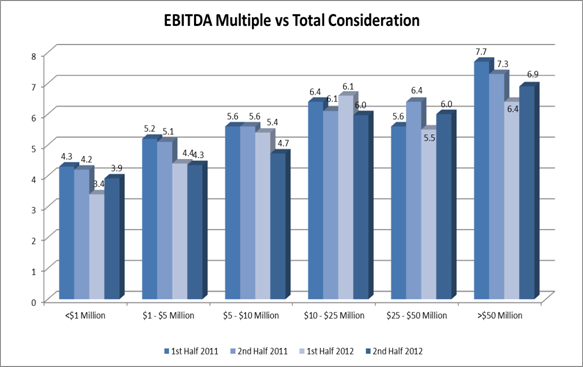EBITDA Multiples Explained Clearly
Post on: 16 Март, 2015 No Comment

The Use of EBITDA Multiples in Valuing Companies
slide 1 of 4
Introduction to EBITDA
Earnings before interest, tax, depreciation, and amortization (EBITDA) are a measure of company profits that can be calculated from the publicly available information in the company’s financial statements. It is therefore easy for investors to obtain and use, and it can be a tool to compare the performance of companies of similar size operating in the same industry. A multiple of the EBITDA may also be used to value a company, especially in relation to its competitors, where the multiple to be used can be obtained from dividing the market value of similar enterprises by their EBITDA and using the mean or median result as the multiple for valuing an enterprise.

EBITDA takes out of the equation those items that might obscure how the company is really performing. The tax charge can be affected by the tax strategy of the company, the availability of tax losses brought forward from previous years, or the amount of tax allowances available for capital investment. Depreciation and amortization are dependent on the extent of capital expenditure by the company and may also depend on subjective estimates of the useful life of the plant and equipment. The amount of the interest charge depends on the company’s choice of how to finance its operations. By taking out these items the EBITDA gives a figure that is closer to the actual cash generated by the operations of the enterprise, though it is not a measure of cash flow and should not be confused with this.
The use of EBITDA as a measure of profit gained popularity with private equity companies who needed to analyze the financial statements of target enterprises that were considered to be in need of financial restructuring. The target companies were often distressed enterprises that were not making an operating profit and that if acquired would need to be downsized and streamlined. The private equity investor would be looking at a measure of the potential ability of the target company to pay interest on loans if a deal were done involving a relatively high level of debt financing.
Using the EBITDA would give some idea of the availability of cash to deal with the repayment terms of debt, ignoring the current financing structure of the target enterprise. The private equity firm would especially be interested in the ability of the target company to generate funds to pay the interest and repayments becoming due in the first one or two years after being acquired.














